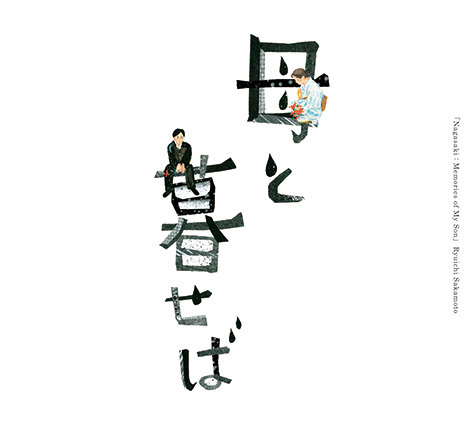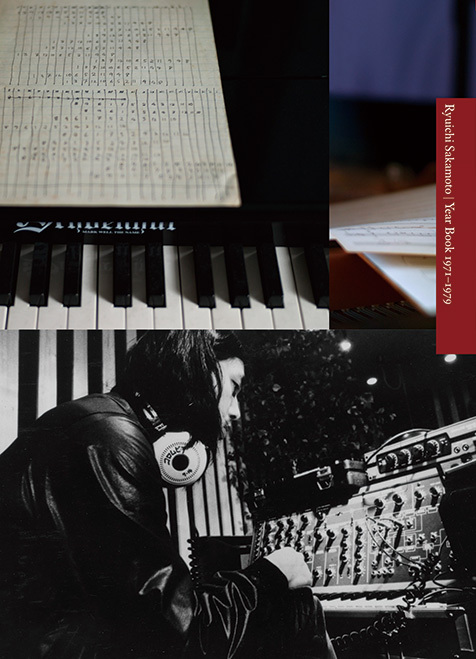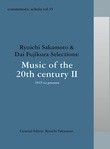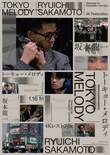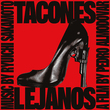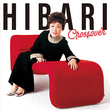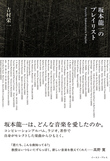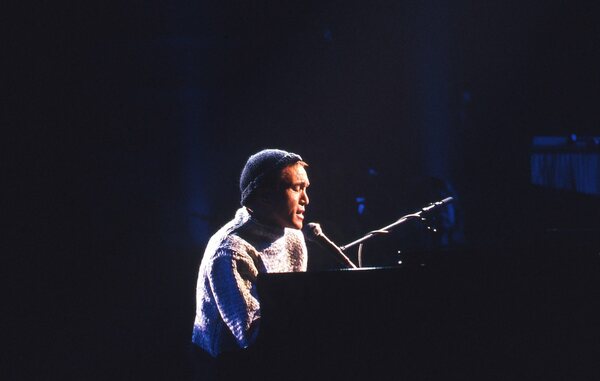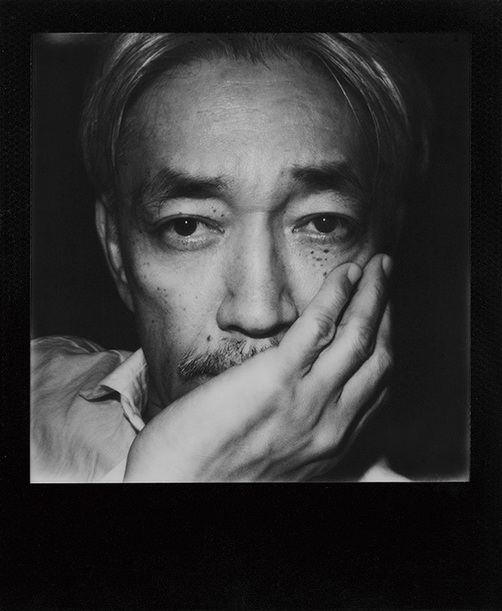
Ryuichi Sakamoto
YEARS before and after R.S.
Written by : Masato Matsumura
Some time mid-November, I finally became a Taco -
To be more specific, I was there to perform at the memorial gig remembering the late Toshiharu Osato -the musicologist, professor at Yokohama National University and member of bands including Taco or Gaseneta- which was held in conjunction with the 6th anniversary of the death of the musician.
The mastermind behind the whole event was Harumi Yamazaki. I am skipping the details here, but basically this man who used to wander back and forth the underground and subculture scenes of the late 70s to the early 80s, was also the close ally of Osato who lived under the same roof in their days of the bands Gaseneta and Taco. The avant-gardists who were already punk and already new-wave even before the waves of punk and new-wave washed in. For those who have not lived the times back then, the hearsay and tales only work out as mere legends, but given the honour to participate in the event this time, I was able to get a bit of a taste the milieu of the times. Of course there is no such of thing as my actually breathing in the air of from the past, and all I can say is that I simply caught a whiff of the atmosphere, but still, the thing about music, especially pop music, is that even though it is supposed to be a product of the times, out of a whim, sometimes they simply override such concept.
Whether Taco lived up to that, I will have to leave that to an objective judgement, but now, the acrid humour that was injected in songs such as “Hito Sute Bushi (meaning Person’s abandonment song)”, “Outochusu Wa Sekai No Minamoto (meaning The Vomiting Center is the Origin of the World)” or “Uchujin No Haru (meaning Spring of Aliens)” seems to have increased its degree of chaosness over the passing of times. The granddaddy of it all would be “Naisho no Emperor Magik (meaning The Secretive Emperor Magic”) in which singer/actress Jun Togawa fills in for Lolita Junko (Junko Shinozaki) who was the original singer for the song and also whom Togawa enjoyed friendship with. The original which used to be on the techno side had been rearranged to a mix centering more around live-play, and at the gaps in between, Yamazaki manages to squeeze in his muttering, taking the role of Emperor Hirohito. Never did I ever imagine that there’d be a day I’d be listening to an unplugged version of this song. What would the writer/composer/arranger, Ryuichi Sakamoto say if he heard this? – I blankly thought to myself, peering out at the stage from the wings. The song was originally on the 1983 “TACO” album by Taco, and to easily call it a parody of “Ikenai Rouge Magic”, - the collaboration song between Sakamoto and Kiyoshiro Imawano that was released the year before, - would already be rather on the lame side.
Though, the year 1983 was one that saw its significance in the sense that just before going into the ‘sankai (break-up)’ tour of his band YMO, Sakamoto started to set foot on new grounds for world scale activities, gaining a foothold through the film, “Merry Christmas, Mr. Lawrence” (1983) directed by Nagisa Oshima. Still at the same time, he kept himself diligently establishing ties with the underground players such as the bands FRICTION, Phew or Taco. It is unclear whether Sakamoto had in his mind the notion that those who wish to sally forth into the world must first thrash it, but anyhow, with the post-modern climates and embers from the 70s still glowing, the early 80s was not such the icy place as the world is today.
Putting aside the presumptions whether the aforementioned movements of Sakamoto were or were not unrelated to such state of the world, it seems that I have somewhat talked too much. I would like to take this opportunity now to look back on the artist in the 70s, - his whereabouts and howabouts before he sets out for the said movements.
Awakening to Claude Debussy in his teens, getting involved in politics in his high school days and frequenting Jazz Kissas (jazz coffee shops with the often superb sound systems in Japan in which listening to music is the primary purpose) from those days, though some part of it owes to the trends of the time, Sakamoto was unmistakably a precocious young blood, which is also evident in the fragments of commentaries penned in his autobiography, [Ongaku wa Jiyuu ni Suru (meaning Music Frees)]. Though, it was not until his entrance to Tokyo University of the Arts in 1970 that his fate seemed to start raising its head. And most justifiably, it isn’t surprising that he himself was dubious about the whole thing too.
Finding it hard to blend in with his fellow alumni at the Department of Composition, Sakamoto starts his frequent visits to Shinjuku Golden Gai (a small area of Shinjuku composed of a network of narrow alleys, famous for its nightlife and as an area of architectural interest) through socializing with friends from the Fine Arts Department, and there he obtains his job to play as a session musician for a folk singer in the mid-seventies. But even before that, being the accomplished practitioner, he is known to have already completing writing up a “Sonate Pour Violon Et Piano” and “Quatuor A Cordes. Etudes 1.2” as part of his curriculum at the university, immediately after entry. That is some time during 1970 to the following year.
Those sound sources (“Sonate Pour Violon Et Piano” from the recordings of 1984 and “Quatuor A Cordes. Etudes 1.2” newly recorded in 2015) is said to be included in the new release of the “Year Book” series, “Year Book 1971 - 1979”. This series started on January 17th, 2015 -which was Sakamoto’s 63rd birthday- and uses a ‘year book’ format that aims to supplement his archive by compiling his never-before-published sound sources. However, given that the 1st of the series lists tracks from 2005 to 2014, it’s not necessarily in a sequential order. This second of the series deals with the most dynamic yet chaotic times of his career, the 10 years from 1971 to 1979, in which this man in his youth –now called kyoju (meaning Professor in Japanese, his nickname)– becomes part of the influential electronic music band, YMO, and also finds his feet as a composer.
Given this, naturally, one’s interest would be directed to the lineup of the recordings, but need not worry, all is covered. For instance, “Memories Of Nazca (Anti-oneiric Device Or Music As A Function Of Anti-collectivism)” is a huge opus consisting of 13 parts that mixes analog synths with improvisation. Co-performing are the members of Kachi Fusui, an improvisation band who at the time were still high school students. The fact that Osato had a crush on one of the members of Kachi Fusui, Fumiko Takahashi -who would often visit the Genon (modern music) club at Meiji University, introduced to her by the avant-garde guitarist and experimentalist Satoshi Sonoda- can be guessed from what’s written in [Gaseneta no Koya (meaning The Wilds of Gaseneta)], the writing by Osato as either a novel or own commentaries (hard to tell), and in the same book, it is revealed that Gaseneta also made an appearance at the concert hosted by EX HOUSE, which seem to have ended up in total blunder.
Even with these anecdotes alone, this new second issue of the “Year Book” series proves itself to be a first-class historical material for anybody interested in the Japanese underground scene back then, but it must be noted also that the year 1978 in which the aforementioned song was recorded, was also the historical year that YMO was formed, as well as the year that saw the release of Sakamoto’s debut album, “Sen no Naifu (eng. Thousand Knives”). That songs like these were skulking in the shadows at the very beginning of the authentic history of Sakamoto is nothing but symbolic, and while still appearing to work in harmony with the works seen in Disc 1 of classical ~ modern music or Disc 2 of the pop field, they still turn their backs and act repulsively, making it hard to get a proper sense of his real character.
On Disc 1, there is “Hitori Heya ni Ite (meaning Alone in the Room)”, the first studio recording he did with Masato Tomobe the folk singer/poet, and on Disc 2, “Parade” from the trio of the Niagara Triangle -a legendary folk band by legendary singers, Eiichi Ohtaki, Ginji Ito and Tatsuro Yamashita- and while both are considered to be the gold standards of Japanese pops history, in this collection, it is not only his elegant renditions supporting the pieces that shows its brilliance. In “Nakaoreboushi wo Kamutta Otousan (meaning Father Wearing a Felt Hat)” with novel writer Taeiko Tomioka, or “Yakusha Kagyo (meaning Actor’s Business)” by Piranha Gundan -a group of bit actors from the leading film company, Shochiku Eiga-, Sakamoto offers glimpses of his competent abilities as an excellent composer and arranger. Actually, rather than earnest vocational ethics, I sense the same smell as Toru Takemitsu -the composer who achieved renown for works combining Western classical music and the sounds of traditional Eastern instruments- when he introduced jazz or Japanese pop music to Japanese motion films in its golden age, only replacing them by soul music or folk(lore) in this case. The issue is how to lead and make the way in the pop field, which all comes down to experimenting and learning.
Speaking about learning (gakushu in Japanese), I cannot stress enough how disappointing it is to see that the sound source of Gakushuudan -a unit formed in 1975 with music critic and taisho koto player Kenichi Takeda- is not included in this “Year Book 1971 - 1979” (, though considering the nature of the group, no sound sources seem to be preserved anyway). Surely, what was learnt by both of them from the prolific list and methodology provided in Takeda’s critique [Chihyo ni Todoroku Ongakudomo (meaning Musics Rumbling on the Surface)] should have been of no small significance. Still, and let me stress this again, times had moved on to a place where music could no longer be discussed without separating it from this product and medium called a ‘record’, nor from technologies and markets. It was an era so different from when Toru Takemitsu was around.
But then again, we can’t just sit around idly. The choices made by Sakamoto were not even simple forces, let alone, game-changers. They were backlashes to the attempted purification of music of the times, and he knew he had to drum it up. Sakamoto’s itinerancy from the 80s to the 90s is expected to be revealed even further in this Year Book series that we earnestly hope follow-through going forward, but even now when we can look back on his provenance with the abundance of records he has put out, it is clearly evident that his attention has never been swayed, even in the slightest.
So when the news came about that the artist had been taken with illness, so many found their spirits sink, laden with the sense of loss. It is nothing but sheer joy that it ended up as needless fear, but for me, to find out that his very first work after his comeback to be the score for the latest film by Yoji Yamada -the veteran director known for the “Otoko wa Tsurai yo” series or “The Twilight Samurai”- is profoundly moving. According to his autobiography, on meeting Toru Takemitsu in London introduced by David Sylvian, the two entered into an animated conversation of “how Ozu’s (Yasujiro Ozu –film director and screen writer, regarded as one of the most influential directors)- films are great, but the music sucks”, and agreed that the two should get together to rewrite all the scores on Ozu’s film works. They were never able to come up with the goods as Takemitsu joined the majority, but the fact that Sakamoto was teaming up with Yoji Yamada who did the remake of Ozu’s “Tokyo Monogatari (eng. Tokyo Story)” –the 1953 film Ozu is most well-known for- into “Tokyo Kazoku” reminds me of this anecdote of the two that took place in 1983 (, yes again, that year 1983).
It is said that Sakamoto took the job, deeply identifying with the theme of the story that was based on the play by Hisashi Inoue -playwright and author- “Chichi to kuraseba (eng. The Face of Jizo)” but with the setting transposed from the city of Hiroshima to Nagasaki. I have not yet seen the film “Haha to Kuraseba (eng. Nagasaki: Memories of My Son)” but gathering from what I hear in the soundtrack, it sure must be one piece of work that projects delicate fragments of true beauty and grace. Antiwar and antinuke are placed at the center of the main subject, but the story also touches on broader issues such as the connections between the deceased and those alive or family issues. Kiyoshi Kurokawa –film director, playwright and writer- portrayed resurrections that spoke to the post-quake (the Great East Japan Earthquake) realities in the film released in 2015, “Kishibe no Tabi (eng. Journey to the Shore)”, which shares the same kind of feel of fictitious space that one would experience in “Haha to Kuraseba”.
Including the main theme of the music (in 2 versions, one in strings and one in piano) of which the melody line is even reminiscent of a school song, most part of the score is created in the manners of classical music, but not just simply giving the nostalgic touch to the score in old arrangements, the outburst of emotions are controlled with astuteness, in some cases bringing moments that remind the listener of the avant-garde composer, Luigi Nono. In retrospect, when it comes to film scores in particular, Sakamoto has undoubtedly always been the man of authentic professionalism which originates mainly in his experience of familiarizing himself with classical music from early childhood. Also, formative experience has always been the basic premise for Sakamoto to systematize music, and his hearty appetite for contemporary/experimental music is proven to remain unchanged, still today, as seen in the round-table talk celebrating the 15th issue of the “commmons: schola” –a series of cross-genre music selections by Sakamoto- released after an absence of a year, based on the theme of post-war music in the 20th century.
To consider John Cage as the degree zero of music and to identify that point as the end of history seems to be the dominant approach with the public, -or rather, it is simply not worth thinking about the future beyond the end-, but from the perspective of popular music, it can also be regarded simply as the other side of the double sides, -that it is merely a reflection of the depletion of styles with the 90s being the turning point.
The album “Goodbye 20th Century” released toward the end of the 20th century by Sonic Youth when Jim O’Rourke was still around, featured artists ranging from John Cage, Christian Wolff, Steve Reich, Pauline Oliveros, Yoko Ono or Takehisa Kosugi, but by adding to the roster, George Maciunas, it is obvious that they had set the Fluxus as the borderline. On the contrary, Sakamoto, in this music selection, attempts to dig up the assets of the music of the 20th century that lives on into the 21st century, so much more ahead of total serialism or spectral music.
To simply go and assume that pop culture eats away at assets while high culture maintains it, is downright crude, but in the way that Akira Asada –postmodern critic and curator- likened the relationship between Cornelius Cardew and Brian Eno to that of Yuji Takahashi –composer, performer and pianist- and Sakamoto, and in the way that Sakamoto, responded to that, accrediting Cardew as anything else rather than a composer of contemporary music, the ways in which the crossing-over of borders raises questions show no difference from the previous century.
A hackneyed conclusion it may be, but the issue is more the gesture there, so even if Sakamoto takes some unforeseen molluscan movements going forward, if you have been tolerant enough to have read this far, you would easily know that there is something unshakeable that he is standing firm for.
Movie "Haha to Kuraseba"
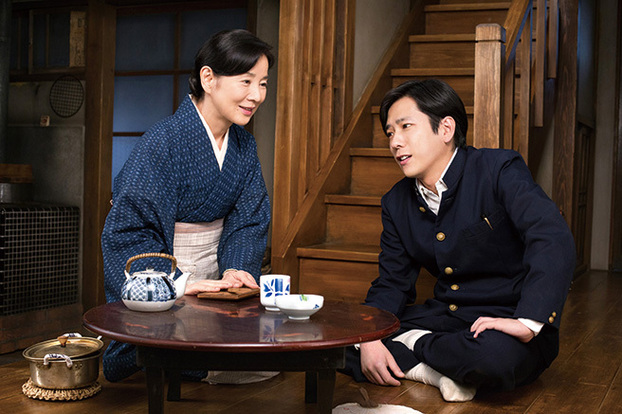
Trailer: "Haha to Kuraseba" [Director: Yoji Yamada] (2015)
